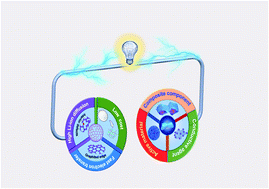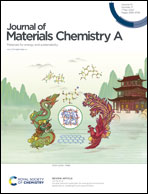Carbon nanoflakes for energy storage: scalable and low-cost synthesis, excellent performances toward comprehensive application†
Abstract
While two-dimensional (2D) carbon materials are widely used in energy storage, scalable synthesis of 2D carbon nanoflakes is severely hindered. Herein a concise approach toward large-scale preparation of porous carbon nanoflakes is achieved via a self-induced strategy, using low-cost industrial pure water-absorbent resin as sources (WAR-CNFs). The as-synthesized carbon nanoflakes exhibit excellent performance toward comprehensive energy storage application for an active material, composite component and conductive agent. When used as an anode for LIBs, the WAR-CNFs show outstanding high-rate performance: a high reversible capacity of 710.4 mA h g−1 could be reverted after periodic rate performance testing from 0.2 to 4.0 A g−1 over 410 cycles; high discharge capacities of 329.2 and 243.7 mA h g−1 could be retained after 5500 cycles at 4.0 and 6.0 A g−1, respectively. Meanwhile, the WAR-CNFs could distinctly improve the capacity and stability of metal oxides when used as a C component. The MnO/WAR-CNFs and Fe3O4/WAR-CNFs could deliver high discharge capacities of 1067.7 and 739.6 mA h g−1 after 200 cycles at 0.2 A g−1. Moreover, the anode material using WAR-CNFs as the conductive agent shows much higher capacity than that with acetylene black (AB). The low cost and scalable synthesis and the prominent performance for comprehensive application of the WAR-CNFs endow it with great potential for commercialization in energy storage.



 Please wait while we load your content...
Please wait while we load your content...